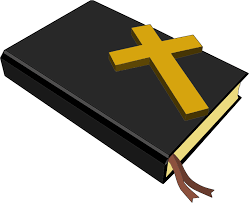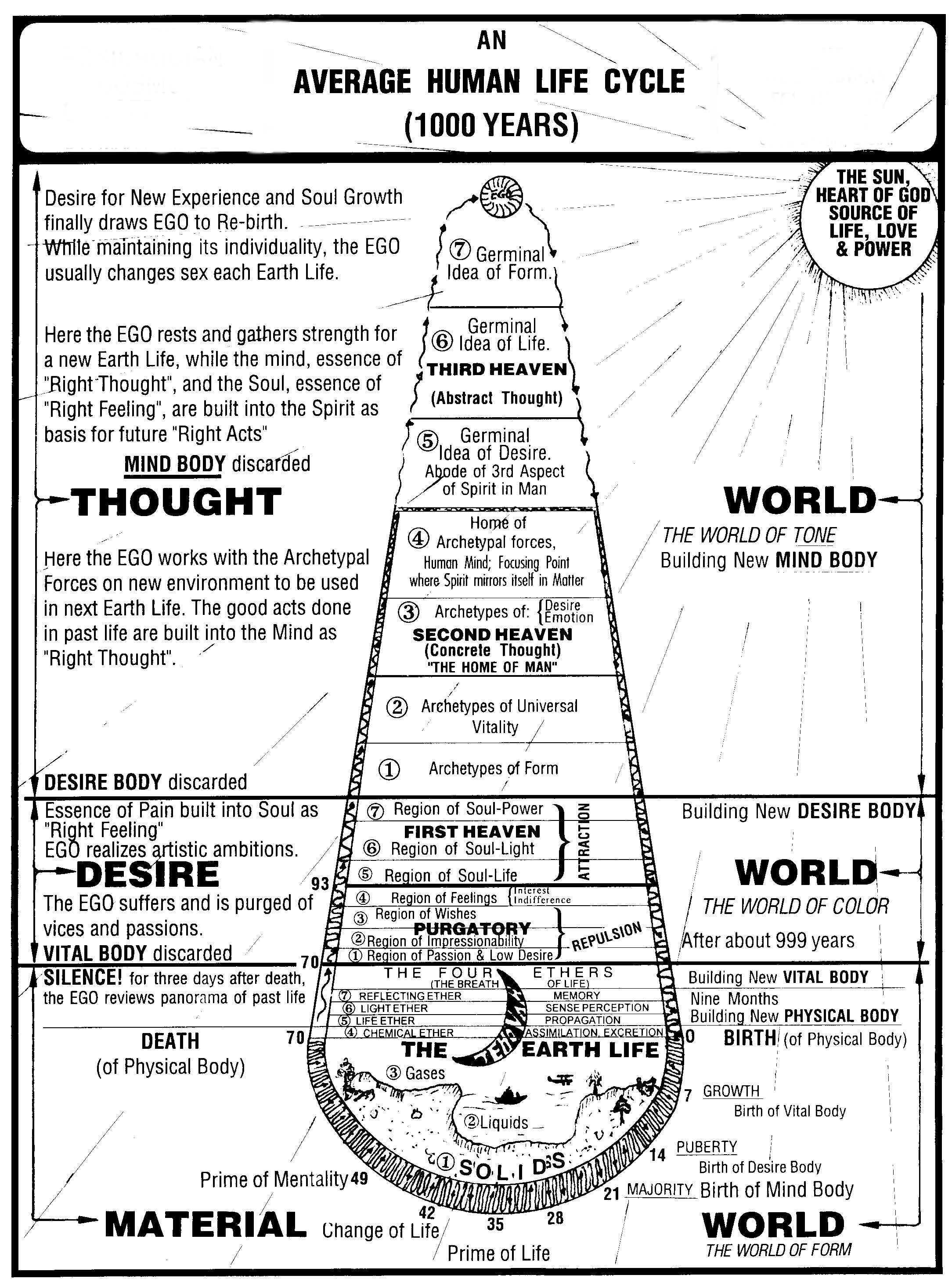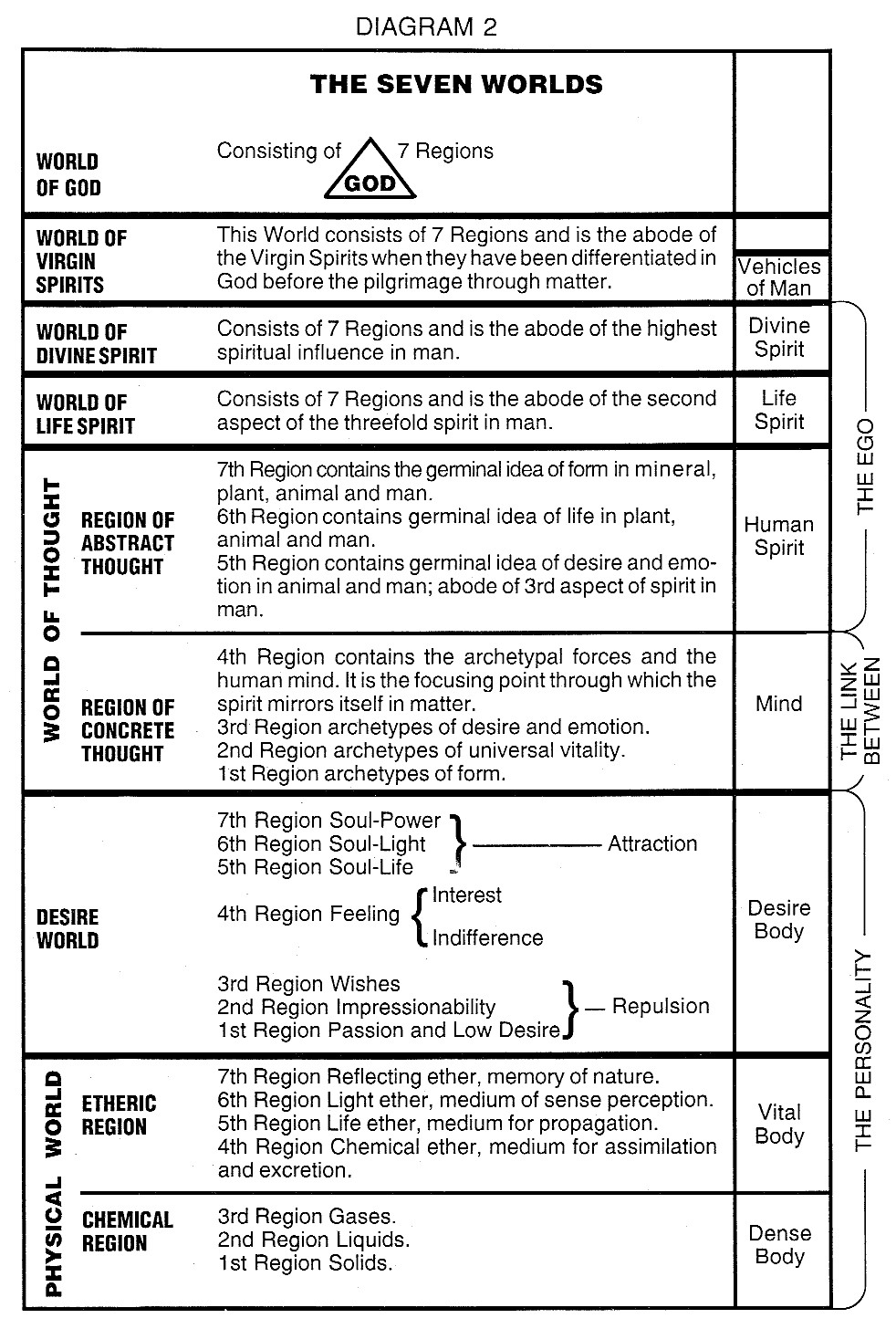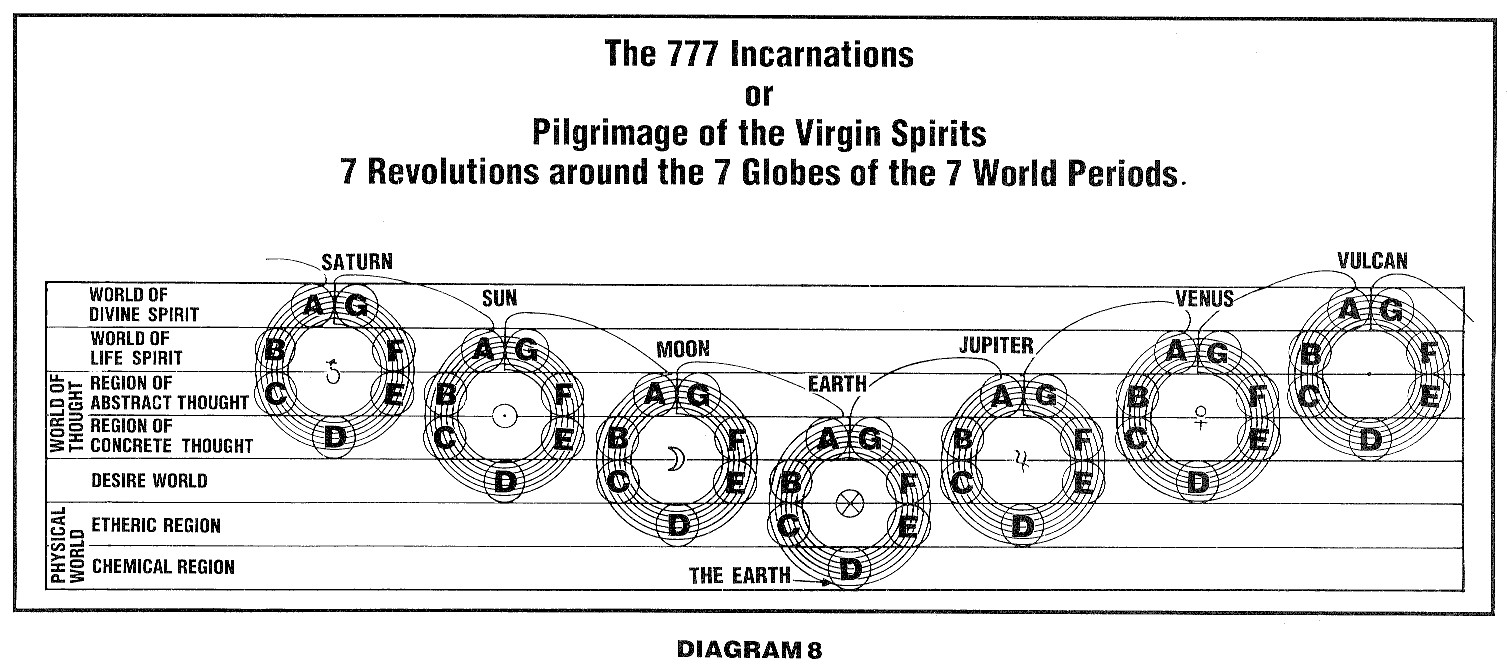
| rosanista.com | ||
| Simplified Scientific Christianity |

Behold, the former things are come to pass, and new; things do I declare: before they spring forth I tell you of them.
Chapters forty to fifty-five of the Book of Isaiah are known as the Deutero-Isaiah; that is, the Second Isaiah or the Great Unknown. Exoteric commentators assume these are not of Isaiah's authorship but the work of another, since they deal with historical events of some two hundred years after Isaiah's time. Esotericists adopt a somewhat different point of view, for they know that certain highly evolved and spiritual-minded persons do have power to preview future centuries before they unfold as earthly history. There have been Seers in all ages and in all civilizations who had such pre-vision and could foretell the trend of the times. As has been well said, prophecy is history written in advance.
It is true also that another esoteric mystery is involved in biblical instances where a great prophet or teacher reappeared in the course of centuries. The Disciples assumed without question that Jesus or John could be Elijah returned. This indicates how the Hebrews commonly accepted the idea of such rebirths. When writings of the exilic period are attributed to the first Isaiah it indicates that, regardless of the era in which they were written, Hebrew scholars believed they were the work of Isaiah himself. In like manner they believed that Ezra was "raised from the dead" after a hundred years to complete his work on the Scriptures. The First Isaiah may indeed have foreseen the future of his people; he may have been "raised from the dead" during the Exile to complete his great work, with no impairment of memory from the one birth to the next. This would require great spiritual power, but tradition and Scripture agree that Isaiah was a Master of transcendent Degree and several apocryphal Books describe his transfiguration and ascension. The great Christian teacher, Origen, accepted these phenomena as authentic and referred to them in his writings.
Historically, these events form the background for prophecies of the Second Isaiah, about 549-538 B.C. A new note is sounded in harmony with a new evolutionary development of humanity; it is the note of vicarious suffering and the teaching of the redemptive value of pain and sorrow. These truths could not have been given before the introduction of the Arian religion. They then became necessary to an understanding of Christ Jesus' mission, to which Isaiah makes frequent allusions.
Cyrus, Koresh or Khosroo — all forms of the same name — is one of the most interesting characters of ancient history. His organization of the Persian Empire high-lighted an important period in the spiritual and material evolution of humanity — the period when the Semitic races and the last vestiges of Taurean worship were finally giving way to the post-Atlantean races and the Arian religion. First through the power of Greece, later through Rome, the Fifth Epoch peoples gradually became the controlling factor in the civilization of the world. Cyrus was the first Asiatic ruler to enter into close relationship with these fresh races. "It was a moment of meeting between the race of Japeth and the race of Shem, those meetings that have been truly said to be the turning points of human history," declared Dean Stanley in his lectures on the history of early religion.
Isaiah now ceased to prophesy doom or destruction; instead, with high ecstasy he recounted his vision of the destiny awaiting the redeemed:
The New Jerusalem and the redeemed of whom the princely prophet wrote are more than the earthly city in Palestine or one racial remnant restored to its ancient home. Esoterically — and this interpretation is very plain in many of the Scriptures — Jerusalem as a City-State symbolizes the whole earth, while the redeemed make up a new Christ race gathered from the whole earth. Isaiah glorifies that holy race and its holy civilization whose supreme Ruler is God: "Have ye not known? have ye not heard? hath it not been told you from the beginning? have ye not understood from the foundations of the earth? It is he that sitteth upon the circle of the earth ... that stretcheth out the heavens as a curtain, and spreadeth them out as a tent to dwell in" (Isaiah 40:21, 22).
Before that great and glorious Day of the Lord can arrive certain changes must occur in the solar conditions. According to occult tradition, the entire solar system was deranged at the time of the "Fall" by a displacement of earth's axis, as evidenced by irregularities of both plane and axis rotation in the case of certain planets, particularly Saturn and Neptune. Were the Sun and the Moon in accord, the latter would always be full. The "Fall" of man is blazoned in the heavens in the alternating segments of the Moon. In his Menes and Cheops, Van Riker states that the solar system may be likened to a machine that was once perfect but received a violent wrench so that it no longer runs smoothly. Paul describes the whole creation as groaning and travailing, awaiting the day of redemption.
The Babylonian Tablets aver: "I will come to earth to fall into the water, putting the south in the place of the north." Hence, Wise Men of Babylonia also predicted the coming of a new Divine Age when ancient order should be restored. The thirty pieces of silver for which Judas sold the Christ is said to have reference to the thirty days of the month.
Writing in World Life, Winchell points out that it is entirely conceivable that both Uranus and Neptune have suffered an overturn that accounts for a tilt of over 145 degrees in the case of Neptune and 98 degrees in the case of Uranus' satellites. The nebular theory, he adds, requires that "all primary and secondary planetary orbits should be strictly coincident to the plane of the Sun's equator if the system assumed form in the absence of all perturbing influences from without." When the path of the Sun coincided with the equator of the earth seasons were uniform, all differences of climate being produced by differences in the angle at which solar rays met the earth in north and south latitudes. Thus, perpetual summer existed at the equator, perpetual spring a few degrees to the north and south, perpetual winter at the poles.
However, since the "Fall," on approximately September 21, the Sun crosses the equator to the south, abandoning the northern hemisphere to rigors of autumn and winter; contrariwise for the southern hemisphere. Therefore the Sun annually repeats the tragedy of the Fall, as does the Moon in its monthly course. About December 21 the Sun is farthest south of the equator, and for three days it seems to be stationary. Around December 24 it begins to retrace its movement, returning toward the equator by slow degrees until once more, at the Vernal Equinox about March 21, it crosses the equator going north, bringing spring to the northern hemisphere. In Mystery language it is then said to emerge from the tomb, while the point where the ecliptic and the earth's equator seem to cross is called the Place of Crucifixion. The Festival of Easter is fixed in accordance with astronomical conditions. Easter is not the first Sunday after the Vernal Crossing, but the first Sunday which follows the first Full Moon after the Spring Equinox. If this holy Mystery merely commemorated the Death and Resurrection of the Master Jesus there would be no purpose in its being thus correlated with astronomical factors; its purpose is much greater than that, for it marks the time when the earth is particularly receptive to cosmic forces. The same is true of the other three sacred points of the year, as frequently elucidated in New Age Bible teachings.
In the new Christed world man will again know his place in the cosmic order and will come and go among Angelic Hierarchies of our solar system. Hence, the rapture of Isaiah's song:
Mysteries pertaining to such Christ Consciousness are again referred to in Isaiah 43:2: "When thou passeth through the waters, I will be with thee; and through the rivers, they shall not overflow thee: when thou walkest through the fire, thou shalt not be burned; neither shall the flame kindle upon thee."
The Remnant comes from all parts of the earth and is, collectively, the child or representative of God.
It is to this statement in Isaiah that Jesus refers when He speaks sadly to the Jews of His day who rejected Him: "Having eyes, see ye not? and having ears, hear ye not?"
Isaiah describes his own preparation for service in these words: "And he hath made my mouth like a sharp sword; in the shadow of his hand hath he hid me, and made me a polished shaft; in his quiver hath he hid me" (Isaiah 49:2).
He also describes the method of his preparation-a method that is equally fitting for every aspirant to such a high phase of service:
Isaiah 49:20
The children which thou shalt have, after thou hast lost the other,
shall say again in thine ears, The Place is too strait for me: give place to me that I inay dwell.
Isaiah 51:9-11
Awake, awake, put on strength, O arm of the Lord; awaken, as in the
ancient days, in the generations of old. Art thou not it that hath cut
Rahab, and wounded the dragon?
Art thou not it which, hath dried the sea, the waters of the great
deep; that hath made the depths of the sea a way for the ransomed
to pass overt
Therefore the redeemed of the Lord shall return, and come with
singing unto Zion; and everlasting joy shall be upon their head: they
shall obtain gladness and joy; and sorrow and mourning shall flee away.
Rahab is the great serpent, the dragon lower nature. When the power it symbolizes is transmuted it becomes the means by which the ransomed, those who have overcome, pass into the new day of a new and higher consciousness. This is the inexorable law upon which redemption is based. It was identification of the higher nature with Rahab, dragon of selfish desire, that caused man to lose the exaltation of consciousness referred to as "the Garden of Eden." Only by *freeing himself from this monster can man gain the New Jerusalem.
This spiritualization of consciousness is attended by great physiological changes. Certain body centers that were dormant awaken into activity. Isaiah calls these centers watchmen, and with their awakening within himself he expressed the rapture of cosmic consciousness:
He describes the unawakened masses thus: "His watchmen are blind: they are all ignorant, they are all dumb dogs, they cannot bark; sleeping, lying down, loving to slumber" (Isaiah 56:10).
Only one who has learned to lay aside at will his dense physical body, and who possesses the shining raiment of the soul, is free to wander through realms of Light and to know the perfect bliss of heaven worlds. The redeemed alone can feel the ecstasy of Isaiah's song:
From the Memory of Nature he again pictures the coming of the One who shall make these things possible for man. Therein he sees the Holy Birth, the sorrowful life of the great Way-Shower, His rejection, persecution, Crucifixion and death. (Isaiah 52:13-15; 53:1-12.) All these things Isaiah revealed to those who were able to accept them, that they might be prepared to return with Him at a critical, time in history, and to cooperate with Him in furthering God's work for the world.
Chapter III, Verses 56 to 60 conclude the prophecies of Isaiah. Many exotericists consider them as coming from yet another writer, a "third voice." They are termed the Trito-Isaiah, the Third Isaiah, and are looked upon as a miscellany of prophecies dealing with the period prior to the reform of Nehemiah, about 500 B.C. But again, esotericists understand that these later visions proclaim a yet higher period of Isaiah's development, by which he is able to read in the great Book of God's Remembrance records of still greater glories that are in store for them who love God and do His will. The keynote of these final visions is found in the words: "O Lord, why hast thou made us to err from thy ways, and hardened our heart from thy fear? Return for thy servants' sake, the tribes of thine inheritance. The people of thy holiness have possessed it but a little while: our adversaries have trodden down thy sanctuary" (Isaiah 63:17-18).
The prophet has learned to dwell in that high and holy place reserved to him who is of a contrite heart and an humble spirit. Out of first-hand knowledge he proclaims:
Isaiah 61:1
The Spirit of the Lord God is upon me; because the Lord hath
anointed me to preach good tidings unto the meek; he hath sent me to
bind up the broken-hearted, to proclaim liberty to the
captive — and the opening of the prison to them that are
bound.
Isaiah, exalted spiritual Teacher that he is, is able to assist in "pulling the nails" for those who have made themselves worthy. The physical body is no longer a prison house for them. The blessed fruits of the spirit are enumerated for those who have overcome and remain faithful:
Only those who have made the Mystic Marriage can inhabit this new earth.
Isaiah names the two columns of glory and of beauty, Hephzibah (my delight is in her) and Beulah, (married). The blending within man of the two forces represented by them brings into being a new and rarified body.
The sixtieth chapter of Isaiah contains what has been termed the most beautiful picture of the Golden Aquarian Age given during the Old Testament Dispensation:
Isaiah 60:8
Who are these that fly as a cloud, and as the doves to their windows
This new etheric land will be self-luminous; there will be no need of the Sun's light by day or of the Moon's by night. Those who inhabit the land "walk in the light as he is in the light." They will "fly as a cloud, and as the doves" (symbol of the Initiate) "to their windows" (freedom from the physical body).
The axis of the earth will be righted. Consequently, no longer will there be night or change of seasons. As Isaiah sings, "The sun shall no more go down; neither shall thy moon withdraw itself;" and again, "The glory of Lebanon shall come unto thee, the fir tree, the pine tree, and the box together, to beautify the place of my sanctuary; and I win make the place of my feet glorious" (Isaiah 60:13). The "place of my feet" is not merely one locality on the earth; it is the whole round earth itself, God's footstool, that is to be thus glorified.
The alchemical work of transmuting base metals into gold will be accomplished by those found worthy to abide in this Holy City:
Isaiah 66:22, 23
For as the new heavens and the new earth, which I will make, shall
remain before me, saith the Lord, so shall your seed and your name
remain.
And it shall come to pass, that from one new moon to another, and
from one sabbath to another, shall all flesh come to worship before me, saith the Lord.
It was this universalistic Messiah of Isaiah which Jesus of Nazareth fulfilled when the "time of the end" had come. He at no time thought of himself as a military leader of His people only, but as the Redeemer and Savior of "all flesh" according to the teaching of the great Isaiah. Down through the apocryphal period these two Messianic concepts ran parallel, even to the appearance of the Christ, and after. One school of thought was nationalistic and exclusive; the other was universalistic and inclusive. The former chose Barabbas in the first century and Bar Kochba in the second, military leaders both, and they rejected the Servant of God. Jesus obviously and clearly identified Himself with the suffering servant of Isaiah's visions and with his later vision of the glorious Redeemer.
Isaiah closes his magnificent Book with a joyous vision of earth redeemed and humanity emancipated from the bonds of sorrow, age, poverty and death, a true picture of the coming age when the Lord Christ returns again to His own: "Thine eyes shall see the king in his beauty: they shall behold the land that is very far off' (Isaiah 33:17).
With the coming of good Hezekiah to the throne, the Temple gates were re-opened and people returned to Arian worship with all its splendor and glory as in the days of David and Solomon. "Like a golden sun, Hezekiah, seen through the calm, golden air of his later years, seemed larger at his setting than when at his height."
The King gave his last words to Isaiah as well as to his son Manasseh, for he desired his son to follow the spiritual teachings of his great prophet. Manasseh, however, repudiated Isaiah and plunged into debaucheries and sensualities of the Taurian Age. Isaiah, realizing that his outer work was finished, retired to that mystic center, Bethlehem, and confined his activities to inner plane work. He was followed there by a false prophet, Belchira, who accused him before Manasseh of having professed to see God and of declaring that Jerusalem was Sodom and its princes were Gomorrah. For this so-called heresy Isaiah was compelled to lay down his earth life. To one of the prophet's high attainment life and death were one, meaning only a different sphere of activity.
The keynote of Isaiah's life and the inspiration of his work are inscribed in his words: "Thou wilt keep him in perfect-peace, whose mind is stayed on thee: because he trusteth in thee" (Isaiah 26:3).
— Corinne Heline

|

|

|
|
|
Contemporary Mystic Christianity |
|
|
This web page has been edited and/or excerpted from reference material, has been modified from its original version, and is in conformance with the web host's Members Terms & Conditions. This website is offered to the public by students of The Rosicrucian Teachings, and has no official affiliation with any organization. | Mobile Version | |
|